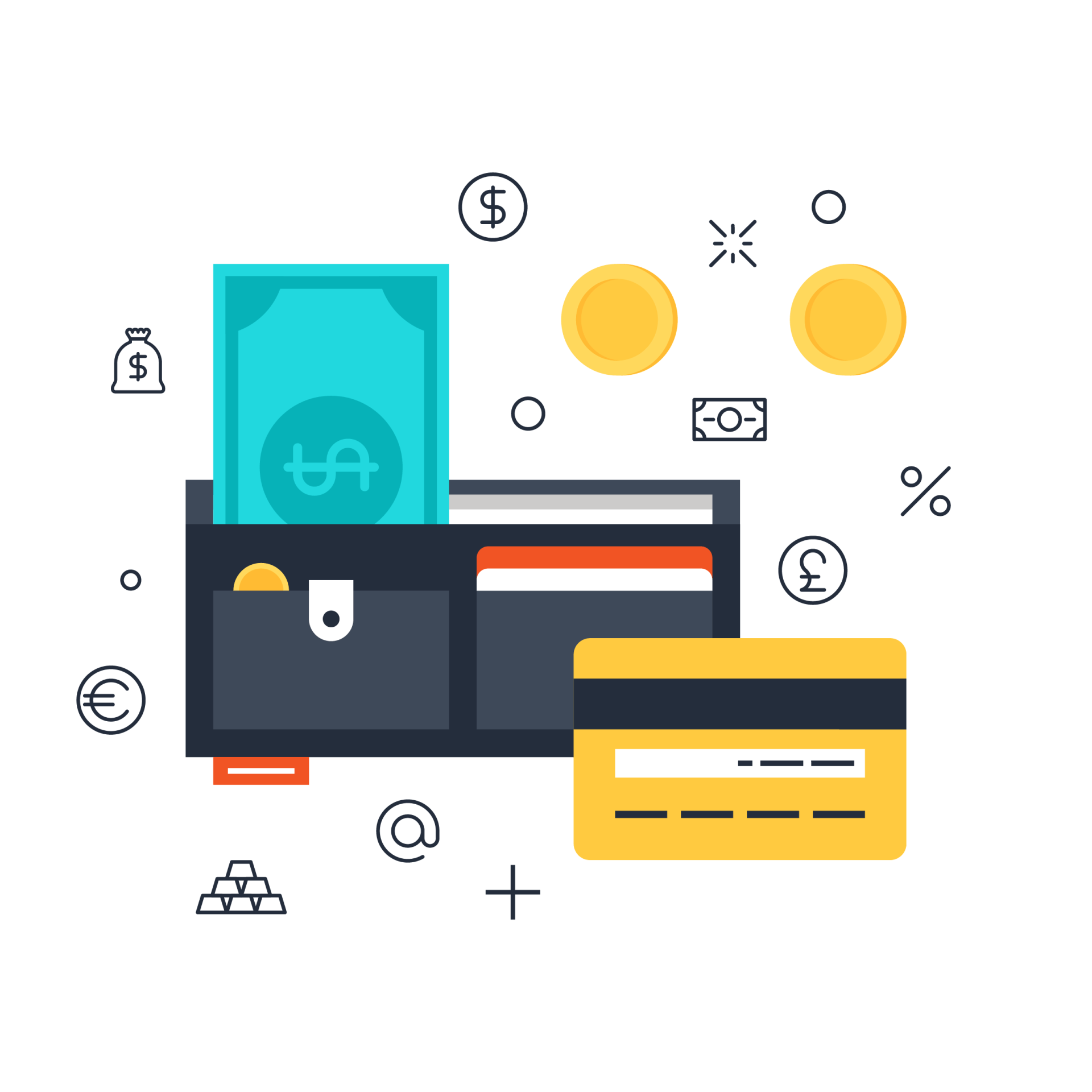Cheat Sheet – 30 Tweaks you can make to your website to increase your conversions as much as 43%!
Cotswold Web • 1 January 2020
So you want to make more money from your website?
If you want to increase revenue from your website, you need to increase your conversion rate.
This doesn't just relate to the sales you make from your website. There are many different types of conversion—sales, content downloads, newsletter sign-ups, contact form submissions etc.
They all matter.
Each conversion takes a prospect one step closer to buying from you. Are you ready to increase your conversions?
Here are 30 tweaks you can make to get started:
1. Track your conversion rate
If you don't know your existing conversion rate, how can you improve it? Start tracking your conversions to establish a baseline.
2. Analyse the conversions you're currently getting
What's working well—and what isn't? Use this to help you figure out what needs more work.
3. Increase the number of calls-to-action (CTAs) on your website
Simple, right? Don't overdo it, but make sure you're giving website visitors plenty of opportunities to convert.
4. Increase the quality of the CTAs on your website
Make sure your CTA is clear. Put yourself in the customer's shoes: is it obvious what you want them to do next?
5. Create an opt-in for your website
Give your readers an incentive to sign up for your email list. This could be a discount code or content download.
6. Experiment with the placement of your sign-up form
Above the fold, in the footer and mid-content are all good options. Experiment to see what works best with your audience.
7. Keep your forms simple
Don't ask for too much information from your prospects. Stick to the basics—name and email work best for an opt-in form.
8. Write better headlines
Why should the reader do what you want them to? Use your headline to grab their attention and hold their interest.
9. Make sure your headlines are specific enough
Don't be vague. Research shows that specific sells, so let your audience know exactly what they're getting.
10. Target people as they're leaving your website
Install an exit-intent popup. Some people worry about pop-ups being irritating - but they work.
11. Use content upgrades
Each time you share a blog post, include a content upgrade that readers need to opt-in to receive. This could be as simple as a PDF of the blog post.
12. Create urgency with your copy
Countdown timers, limited offers—give your target customer a reason to stop procrastinating and act now.
13. Use the right colours
Simply changing the colours of your buttons can have a massive impact on conversions. Red is reported to get good results, as does picking a contrasting colour to the dominant colours already used on your website.
14. Target your ads carefully
When you get the right people on your website, they're more likely to convert. Make sure you're targeting your ideal customer with all of your ads.
15. Experiment with the length of your landing pages
Sometimes long copy works best—other times it can be difficult to hold the readers' attention. Experiment with different lengths to see what works well for your website.
16. Use better images
Ditch the cheesy stock photography and get some decent pictures for your website. You won't regret it.
17. Install a chatbot on your website
Chatbots are all the rage right now, and with good reason. Just make sure you take time to understand your customers' needs and create a chatbot that responds accordingly.
18. Use customer testimonials for social proof
Show website visitors what you've already done for other people like them.
19. Increase your website speed
Studies show speeding your website up by a few seconds can dramatically increase your conversion rate. Reducing the size of any images is a good place to start.
20. Prioritise user experience
The quality of someone's experience on your website will increase the likelihood of a conversion. Make it easy for them to use your website.
21. Install SSL certificates
An SSL certificate builds trust with your audience—and is a must if you're selling directly from your website.
22. Make sure your website is mobile-friendly
The majority of people will be browsing your website from their mobile device, so this should go without saying.
23. Reduce distractions
The more distractions on your website (e.g. banner ads), the less likely people will be to convert. Remove them.
24. Don't be afraid to sell your products
If people don't know you're selling, how are they going to buy from you?
25. Focus on the benefits
Many people make the mistake of focusing on the features of their products in the copy. Focus on the benefits instead and people will be more likely to buy.
26. Use video on your sales pages
Research shows people buy more when they can see a product being used first. Make the most of this with video content.
27. Offer your customers a guarantee
Make it a no-brainer for your website visitors to buy from you.
28. Allow customers to check out as a guest
Don't make the checkout process more complicated than it needs to be. Allow your customers to checkout without registering on your website.
29. Offer a variety of payment options
Likewise, make it as easy as possible for people to pay. Make sure you have cardless options—like Paypal and Apple Pay.
30. Retarget people who don't convert on their first visit.
If people have already visited your website, you know they're interested. Use retargeting ads to get them back a second, third and fourth time—until they convert.
Want to see how we can help you to increase your conversions?
Click below to get a proposal tailored to you.
More Posts.

In today's digital landscape, effective content marketing can be the key differentiator for small businesses striving to stand out. As consumers increasingly turn to online platforms for information, brands must engage their audiences through valuable content that resonates with their needs. Understanding the nuances of content marketing is crucial; it encompasses various strategies designed to attract, inform, and delight customers while ultimately driving sales. From developing engaging customer personas to measuring success through specific metrics, small businesses have an incredible opportunity to refine their marketing approach. This article explores eight proven strategies that can lead to content marketing success for small businesses, equipping you with the tools necessary to create impactful and sustainable marketing efforts. 1. Understanding the Importance of Content Marketing Content marketing is vital for small businesses. It helps connect them with their target audience, builds brand awareness, and drives organic traffic. A well thought out content marketing strategy lets small businesses compete with larger companies by using cost effective methods. Regularly sharing valuable content can position a business as an expert in its field. This fosters trust and encourages potential customers to seek their services. Documenting your content strategy also increases the chances of seeing your marketing efforts as effective, allowing a higher allocation of budget toward content marketing. Creating a diverse range of content types is key. Here are some content formats to consider: Blog Posts Social Media Posts Email Marketing Visual Content Developing a strategic content plan helps business owners carve out unique market spaces. Establishing clear business goals and using tools like Google Analytics to gauge conversion rates can refine your approach. Below is a quick checklist for effective content marketing: Know your target audience Set SMART goals Use a content calendar Perform a content audit By focusing on these elements, small businesses can enhance their content marketing efforts and achieve growth. 2. Developing Customer Personas for Targeted Engagement To create targeted content, small business owners should develop detailed buyer personas. These personas are fictional versions of ideal customers, including demographic and psychographic details. Tools like Google Analytics and social media insights provide valuable data to shape these personas, making them more accurate. Understanding your target audience through buyer personas is key. It allows content marketers to tailor pieces of content that address specific needs and challenges. This approach boosts engagement and builds trust with potential customers. It is often necessary to have multiple personas to cater to various products, services, or customer segments. Each persona reflects different motivations and interactions with your brand at various stages of the customer journey. Here's how you can develop them: Collect Data: Use surveys, Google Analytics, and social media insights. Analyse: Determine the needs, interests, and behaviours of your audience. Create Multiple Personas: Define different segments based on your findings. Tailor Content: Use the personas to guide your content marketing efforts. Effective personas lead to a successful content marketing strategy, enhancing your business goals with every piece of content created. 3. Crafting a Comprehensive Content Plan Creating a successful content plan is key for small business owners. It acts as a guide to align all your content marketing efforts with your business goals. Here’s how you can craft a comprehensive content plan: Identify Key Topic Areas: Focus on subjects relevant to your target audience. This ensures you create valuable content that speaks directly to potential customers. Choose Content Types: Use a mix of blog posts, infographics, and videos. Different content formats can help engage various segments of your market. Plan Distribution Channels: Decide where to share your content. Consider social media posts, email marketing, and your website for maximum reach. Set Calls to Action: Encourage your audience to take the next step. This could be signing up for a newsletter or visiting a product page. Utilise a Content Calendar: This keeps your content marketing strategy organised and consistent, minimising missed opportunities. Analyse Metrics: Use Google Analytics to track conversion rates, engagement, and content performance. Including these elements in your content plan aligns with the fact that structured strategies significantly boost success rates. Regular content audits refine this strategy further, ensuring continued engagement and growth .

Heading 1 Artificial intelligence (AI) has had a huge impact in many areas of life and SEO is no exception. While it has made online searches easier for consumers, keeping up with it and staying ahead as a business can be challenging. As Google integrates advanced AI into its search results, businesses must rethink their SEO strategies. Understanding the future of SEO in the context of AI is essential to appear high on search rankings and remain competitive. Traditionally, search engine optimisation (SEO) has relied largely on keyword optimisation and link building. If you sell garden products, you would make sure the phrase ‘garden products’ was used frequently throughout your website. You would also look to get some links back to your site from other websites – maybe other businesses in your local area or in a complementary sector. These traditional SEO methods are becoming less effective. AI means search engines like Google and Bing have become better at understanding the intent behind a search, through machine learning algorithms analysing huge quantities of data, as well as natural language processing. Natural language processing doesn’t just understand the words in a query, it understands the context and intent behind it. AI can even understand synonyms, slang and regional variation in language! When someone searches for something online, AI can analyse, interpret and predict their behaviour. So businesses have to adapt their SEO strategies to changing algorithms to stay competitive. You need to have a deeper understanding of your target audience and produce content which meets their needs and answers their queries. It is about providing the best answer to the questions your audience is asking, because AI algorithms are skilled at recognising content which meets the search intent of users and provides value. This means that content which is designed to meet specific needs, answer questions and provide the solutions to problems is more likely to rank higher in searches. AI algorithms will prioritise content which resonates with users on a human level – with every paragraph adding more value and depth. This aligns with AI’s preference for content which engages and informs – and also helps build a stronger connection with your target audience. In addition, AI is making voice searches (e.g. Alexa) much more effective. Voice searches tend to use more words than online searches e.g. ‘find me healthy snacks for pre-school children’ rather than just typing ‘healthy snacks’ into Google with no context. This aspect of AI will continue to grow in importance and become even more widely used.





